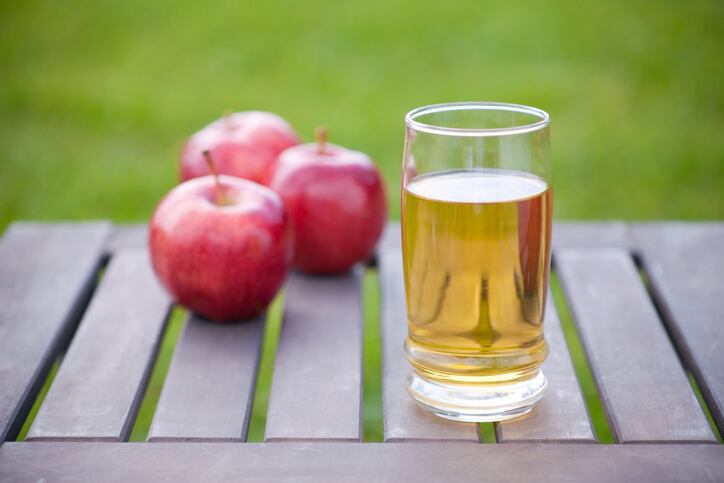There could be “unintended consequences” if parents avoid infant rice cereal amid fears over arsenic, as food intake studies show iron-fortified cereal is the #1 source of iron in the infant diet, claimed speakers at the virtual USDA-FDA event, held on Zoom just over a year after the publication of a high-profile Congressional report alleging “dangerous” levels of inorganic arsenic, mercury, lead and cadmium in leading baby food brands.
‘Almost 20% of older infants are not getting enough iron’
Data from Gerber’s FITS (Feeding Infants and Toddlers) study, which has been tracking food and nutrient intakes of babies and young children for several years, shows that almost a fifth of 6-12-month old babies in the US “are not getting enough iron, a nutrient essential for cognitive development in the first years of life,” said Cheryl Callen, senior director of regulatory affairs at Gerber.
“And when we consider absorption factors for iron, even more infants may not be getting enough iron. Without considering absorption, 18% of infants are not getting enough iron. But after applying absorption factors, this increases to 54% for all infants.”
FITS data also shows a “decrease in the consumption of iron rich foods and in particular infant rice cereal [which is typically fortified with iron, vitamins and minerals],” in recent years, added Callen, noting that 82% of 6-12-month old babies ate iron rich foods (mostly baby cereal) in 2002 vs 52% in 2016.
Moreover, “adequately nourished infants are also less susceptible to the effects of heavy metal exposure,” she said.
“We feel that this conversation [about infant nutrition] needs to be had in tandem with the heavy metal discussion to make sure that unintended consequences are managed.”
USA Rice Federation: ‘Consumption of rice baby cereal in the zero to 24 month population is linked to better nutrient intake’
NHANES (National Health and Nutrition Examination Survey) data also showed that “consumption of rice baby cereal in the zero to 24 month population was linked to better nutrient intake, which leads to better overall health and lower risk of disease,” claimed Betsy Ward, president and CEO of the USA Rice Federation.
“Infants who consumed rice cereal had greater consumption of nutrients like iron and calcium, and lower intakes of unhealthy foods… in the 2020-2025 Dietary Guidelines for Americans, it was recognized how important rice cereal is in meeting nutrient needs for babies.”
USA Rice Federation: ‘Irresponsible reporting leads people to think this is simply a rice problem’
Echoing frustrations voiced by one FDA official last year, Ward said the Congressional report left parents with the impression that the cause of the heavy metals problem is processed baby food from large food companies (when in fact this is an industry-wide issue), and that the solution is buying organic (not the case), or making their own baby food from fresh produce (which also contains heavy metals).
And given that the only FDA action level for infant food right now focuses on inorganic arsenic in baby rice cereal (100ppb), she said, rice foods are getting the brunt of the negative press, although, she claimed, the “levels of inorganic arsenic in rice grown in the United States are the lowest in the world, according to the UN and the WHO."
‘Arsenic is not just in our pantries, it's in our refrigerators, it's in our freezers, it's in our water’
She added: “Irresponsible reporting leads people to think this is simply a rice problem… We don't know how other ingredients may contribute to end product heavy metal levels since at present they are not regulated.
“This can result in hesitancy or refusal of some manufacturers to use rice as an ingredient, even though our rice is below the action level that FDA established,” claimed Ward, who also noted that inorganic arsenic is the issue, not arsenic per se (organic forms are absorbed less and excreted more rapidly).
“Arsenic is not just in our pantries, it's in our refrigerators, it's in our freezers, it's in our water. The most prevalent source of arsenic in the American diet is fruits, vegetables and juices, but I don't think anybody would suggest avoiding eating those healthy foods.”
'False equivalencies'
Ward also expressed frustration over “false equivalencies” whereby very low action levels set for other food & beverage categories are used by health advocates as reference points for action levels for baby foods, when toxicologists will tell you that thresholds for drinking water, for example, are not immediately relevant to thresholds for other food categories because absorption rates might vary, or consumption patterns are different.

While some lawmakers and health advocacy groups say we need action levels for lead, cadmium, mercury and inorganic arsenic in all infant foods right now (the FDA is working on all of these metals but has thus far only set a 100ppb action level for inorganic arsenic in infant rice cereal), thresholds must be science-based and category-specific, and that takes time, said industry speakers at a joint FDA-USDA public meeting on Wednesday (April 27).
The meeting coincided with the release of FDA draft guidance proposing action levels for lead in fruit juice (see box below), which was published 15 months after a Congressional Subcommittee report alleging 'dangerously high' levels of heavy metals in leading baby food brands, prompting a torrent of lawsuits and the introduction of The Baby Food Safety Act in Congress.
‘Arsenic is found in almost anything that grows in the ground’
That said, the USA Rice Federation is working hard to get to the source of the problem with heavy metals, said Ward.
“Whether mitigation comes from new rice types, new growing techniques, or some other advancement, the US industry is ready to adopt scientifically proven approaches. It involves soil chemistry, soil microbes, cultural management and other factors.
“In support of all that we have a taskforce that's looking at management practices, and we work with our rice researchers and extension specialists, and we’re submitting a proposal to USDA’s National Institute of Food and Agriculture soon. The objectives of that study are to identify current and potential alternate rice production practices that move us closer to zero.”
But she added: “Arsenic is found in almost anything that grows in the ground and there are really very few places where there isn't at least some detectable level.”
Alternate wetting and drying irrigation techniques for rice
Gerber is also working hard with suppliers to address the issue of heavy metals at source, said Callen, who noted that the company had had an “arsenic mitigation program for rice used in infant cereal in place since about 2015.
“This includes a partnership with our rice miller to source identity preserved rice that meets our internal specification and ensures compliance. We have also been working together to progressively lower inorganic arsenic levels in the rice for years.”
For the 2022 crop year, she said, “We are initiating work with a rice agronomist who will work with our growers to add new elements to our program.”
One strategy, she said, is growing row rice using alternate wetting and drying irrigation techniques which reduce plant uptake and subsequent accumulation of arsenic.
“We believe that the use of these techniques will enable even lower levels of inorganic arsenic while providing other benefits to both the grower and the environment.”
Soil testing for root vegetables: Heavy metal update linked to pH of soil
As for root vegetables, Gerber has been “working with suppliers and growers on soil testing and field selection,” said Callen.
“Based on an extensive testing program we conducted in 2020, Gerber updated our 2021 soil testing program to include lower lead and cadmium limits for soil than we had before and to add soil pH as an acceptance criteria, as our data would indicate that this is a parameter that has the potential to impact heavy metal uptake.
“And starting this year, we are also initiating the use of some new technology to improve soil sample accuracy using GPS guided auto sampling of carrot fields in Michigan. We find that the more sampling we have, the finer the grid, the more information we'll be able to have on the field levels.”
She added: “In the areas of mitigation, we evaluate cultivars for heavy metal uptake and accumulation, and are looking for new ways to bind lead and cadmium in soils to minimize uptake.”
Nutrient uptake and heavy metal uptake
But there are trade offs that need to be carefully monitored, cautioned Dr Emily Griep, VP regulatory compliance and global food safety standards at the International Fresh Produce Association, noting that “changes in plant uptake of heavy metals can be associated with changes in uptake of nutrients as well…
“We don't want nutrients that are critical for children's or human health to be lost in those mitigation efforts.”

Wednesday’s joint USDA-FDA Closer to Zero public meeting - exploring agricultural techniques to mitigate uptake of toxic elements in crops – was held as the FDA released draft guidance proposing action levels of 10ppb lead in apple juice and 20ppb lead in other single-strength juices and juice blends as part of its Closer to Zero action plan.
The lower level for apple juice reflects the fact that it is the most commonly consumed juice by young children, and as such, may contribute a greater share of kids’ potential lead exposure than other juices, said the agency.
However, Consumer Reports said most manufacturers were already meeting the limits proposed by the FDA and that its tests suggested that much lower levels of lead in fruit juices (eg.1ppb) were feasible.
- Read more HERE about the FDA’s Closer to Zero initiative.




